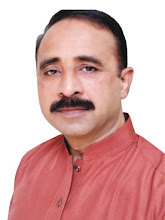In a relatively short time, liposuction has come from nowhere to be one of the most popular forms of cosmetic surgery! But is it right for you? Yes, if deposits of fat (like thigh saddlebags) won't shift no matter how much you exercise or diet. But no, if you think it will be a quick-fix way to remove fat that you can't be bothered to try to control yourself.
You should also consider the condition of your skin when thinking about liposuction. It will be most successful on someone with young, elastic skin that can shrink back after the fat has been removed older skin could be left looking baggy and in this case, smaller amounts of fat are removed.
There is considerable debate over whether it is advisable to remove large numbers of fat cells from the body and many surgeons prefer small, localised removal to deal with specific problems.
However, there is always pressure from patients who are looking for the fastest, easiest way to remove as much fat as possible. A reputable surgeon will only remove as much as is safe and effective.
We are born with a set number of fat tissue cells, the number and distribution depending on our ancestors. Liposuction removes some of these cells and they won't grow back. The most successful liposuction removes the fat cells from localised areas rather than large areas. This is done so, for instance, to correct an unsightly bulge. However, that doesn't mean you won't get fatter after liposuction. If you put on weight afterwards, you will enlarge the fat cells you are left with. The result will be an increase in weight. But one benefit is that you won't have an unsightly bulge again – the size increase will be more even.
It is best to have the surgery with your body in as good a condition as possible - which means losing as much weight as you can naturally, and cutting out unhealthy pursuits like smoking. The surgeon inserts a tube into the body and literally sucks out the fat from areas such as the outer thighs, inner knees, waist, breasts and under the chin. If large areas of fat are being treated, you will have a general anaesthetic and will feel uncomfortably sore afterwards. Soreness will last for up to a week and more general soreness will persist for around two weeks after this. You may have to wear pressure garments as this helps skin to contract but you could still see a certain amount of swelling due to the operation itself for some months.
Reference:
Sita Gita
skip to main |
skip to sidebar

Tuesday, August 10, 2010
Subscribe to:
Post Comments (Atom)
Dr. Syed Kashif Shahid

- Dr Syed Kashif Shahid
- I have done PhD in Physiology with specialization of Neuoro-Physiology from Govt. College University, Faisalabad, Pakistan and my M.Phil in Phytomedicine with research titled (Detection of Heavy Metals from Compound Herbal Drugs), while Bachelor in Bachelor of Eastern Medicine and Surgery (BEMS) with Distinction (Gold Medal) from The Islamia University of Bahawalpur (Punjab, Pakistan) and doing practice of Alternative Medicine for last 27 years.
Popular Posts
-
Heart Risk & More: Like most people, you probably think of cholesterol—if you think of it at all—and picture fatty foods and heart trou...
-
The stomach is a stretchy, bean-shaped sack on the left side of the abdominal cavity. A muscular organ of the gastrointestinal tract, the st...
-
Almost everyone has parasites. It's simply a fact of life. Even Dr. Oz, the now famous Oprah Winfrey guest says..."ninety percent o...
-
Herbs and spices have a variety of uses be it cooking or medicinal properties. Seed bearing plants devoid of the woody stems are known as he...
-
DHT is one of the main causes of alopecia (hair loss), and you ask how? I will tell you how: Dihydrotestosterone (known as DHT) is a male ...
-
Definition: Pernicious anemia is a decrease in red blood cells that occurs when the body cannot properly absorb vitamin B12 from the gastr...
-
You may have heard about what seems to be the latest diet craze—going gluten-free. Should you be shunning gluten from your diet? Not so fas...
-
Stretch marks? A bane that we women spend hours trying to banish or wipe away. Most of the time without major success. So what causes this? ...
-
A new dietary supplement containing an extract from a rare African plant is currently the hottest thing going in amateur athletics —...
-
Hemorrhoids are indeed not fatal, but extremely tormenting. They torture you so much that you go helpless. One can face unbearable pain and ...
Blogroll
Followers
Copyright © 2011 CARE &CURE. All Rights Reserved.
Magazine Basic theme designed by Themes by bavotasan.com. Bloggerized by Free Blogger Template.
Powered by Blogger.
Magazine Basic theme designed by Themes by bavotasan.com. Bloggerized by Free Blogger Template.
Powered by Blogger.









0 comments:
Post a Comment